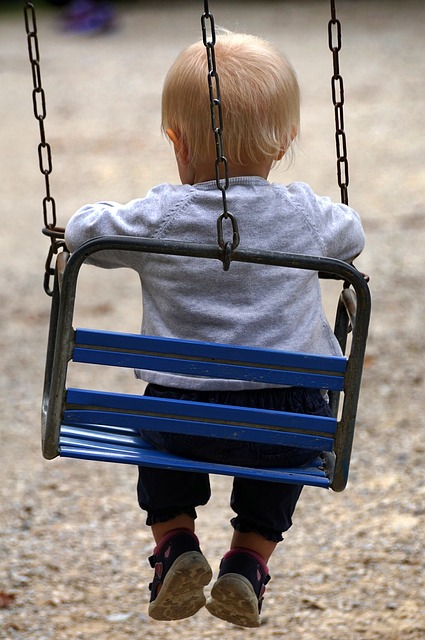The global child protection framework aims to safeguard children's rights and well-being through comprehensive laws and supportive services. Child advocacy programs are key drivers, focusing on amplifying vulnerable children's voices, enhancing access to care and education, and promoting abuse prevention. These initiatives strengthen juvenile legal systems, improve policy reforms, and ensure fair outcomes, thereby creating a safer environment for every child's growth and development while prioritizing their education and rights.
“In today’s digital era, safeguarding our young ones remains a paramount concern. This article delves into the crucial aspect of policy advocacy to fortify child protection laws and foster a safer environment for all children. We explore the current landscape of child welfare services, highlighting gaps and areas for improvement. From understanding the role of child advocacy programs in driving change to implementing effective strategies in juvenile legal advocacy, we emphasize the importance of protecting children’s rights. Additionally, we discuss fostering child development and ensuring education rights as essential components of comprehensive child protection.”
Understanding the Current Landscape: A Look at Child Protection Laws
The current landscape of child protection laws is a complex web that varies significantly across regions and countries. At the heart of this intricate system lies a fundamental goal: to safeguard the rights and well-being of children, especially those who are most vulnerable. Child advocacy programs and welfare services play a pivotal role in achieving this by addressing issues such as neglect, abuse, and exploitation. These initiatives focus on providing support for vulnerable children, ensuring they receive the necessary care, education, and legal protection.
Child protection laws encompass a range of measures aimed at prevention, intervention, and rehabilitation. They cover areas including adoption procedures, juvenile legal advocacy, and fostering child development. By strengthening these laws, we can create an environment that prioritizes the protection of children’s rights. This involves not just punishing offenders but also offering comprehensive services to heal and rehabilitate survivors, break cycles of abuse, and foster a culture that values and protects our future generations.
The Role of Child Advocacy Programs in Driving Change
Child advocacy programs play a pivotal role in driving change and improving policies related to child protection. These initiatives focus on amplifying the voices of children, especially those who are vulnerable or have been affected by adversities like abuse, neglect, or poverty. Through dedicated efforts, they work towards enhancing child welfare services and ensuring that every child’s rights are protected. By advocating for policy reforms, these programs aim to strengthen legal frameworks governing juvenile matters, thereby fostering a safer and more supportive environment for children.
The impact of child advocacy extends beyond legal changes; it also involves supporting vulnerable children in accessing essential services like education and healthcare. By fostering child development and promoting awareness about child abuse prevention, these programs create a network of protection and support. Juvenile legal advocacy, an integral part of these initiatives, ensures that the legal system is sensitized to children’s unique needs, resulting in fairer outcomes and better chances for their future success and safety.
Strategies for Effective Juvenile Legal Advocacy
Advocacy programs focused on juvenile legal issues play a pivotal role in protecting children’s rights and ensuring their well-being. These initiatives aim to strengthen child welfare services by implementing policies that promote fostering child development while preventing abuse. Effective advocacy strategies involve raising awareness about child protection laws among communities, policymakers, and legal professionals. By educating the public about their rights and the signs of potential abuse, advocates empower parents, caregivers, and even children themselves to take proactive measures.
In addition to public outreach, successful juvenile legal advocacy includes lobbying for stricter legislation and improved access to quality legal representation for minors. This involves supporting initiatives that expand resources for child welfare services, enhance support for vulnerable children, and prioritize their education rights. By advocating for systemic changes, these programs contribute to a more robust framework that not only protects children’s rights but also fosters their safe growth and development.
Fostering Child Development and Ensuring Education Rights
Child advocacy programs play a pivotal role in fostering child development and ensuring that every child has access to their fundamental rights, especially in areas related to education. These initiatives aim to support vulnerable children by providing them with a safe environment and opportunities for growth. By strengthening child welfare services, we can proactively protect children’s rights and prevent instances of child abuse.
Juvenile legal advocacy is another crucial aspect, focusing on ensuring child safety within the legal framework. This involves advocating for policies that promote early intervention, support educational opportunities, and safeguard the rights of children who have been victims of abuse or neglect. Through these efforts, we can create a more supportive system, enabling children to thrive and reach their full potential.
Child protection laws are a vital component of ensuring the safety and well-being of our youngest citizens. By advocating for policy changes and supporting initiatives like child advocacy programs, we can revolutionize child welfare services. Effective juvenile legal advocacy and fostering child development are key strategies to protect children’s rights and provide them with the education they deserve. Together, these efforts create a safer, more nurturing environment for vulnerable children, preventing abuse and empowering them to thrive.
